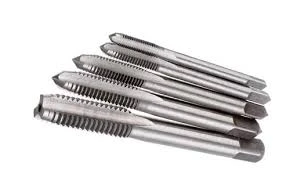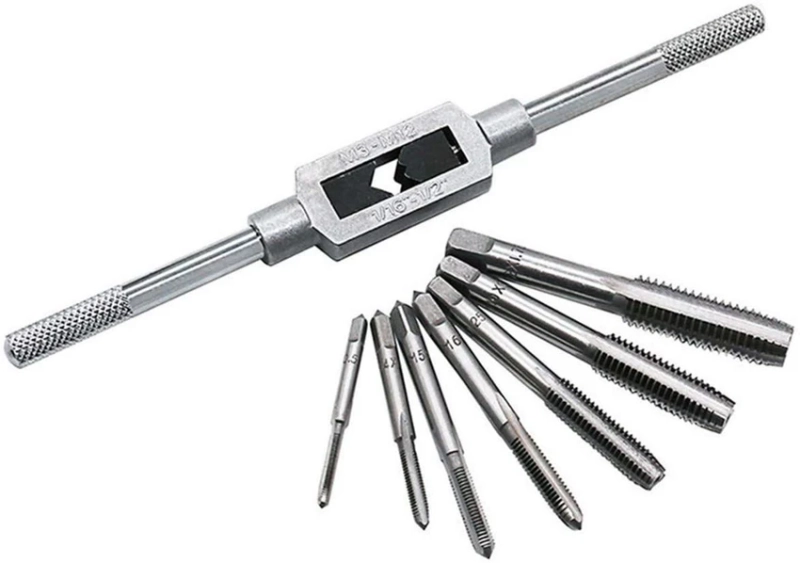
In the world of manufacturing, machining, and metalworking, precision is everything. Whether you’re working with automotive components, aerospace parts, or custom machinery, threading plays a crucial role in assembling components securely and reliably. One essential tool for this process is the thread tapping tool—a staple in workshops, factories, and engineering settings across the globe.
But what exactly is a thread tapping tool? How does it work? What types are available, and how do you choose the right one? In this guide, we’ll break down everything you need to know about thread tapping tools, from their functions to usage tips, helping you improve efficiency and precision in your next project.
What Is a Thread Tapping Tool?
A thread tapping tool, commonly referred to as a tap, is a cutting tool used to create internal threads inside a hole. These threads are essential for allowing bolts or screws to fasten components together. The process of creating these threads is called "tapping."
Taps are typically used after a hole has already been drilled to the correct size. They cut the thread into the inner surface of the hole, essentially converting it into a female thread that corresponds to the male thread of a bolt or screw.
The Importance of Tapping in Manufacturing
Thread tapping might seem like a small step in the manufacturing process, but its significance cannot be overstated. Proper threading ensures:
- Secure mechanical connections
- Efficient assembly and disassembly
- Enhanced structural integrity
- Compatibility with standardized fasteners
Using a quality thread tapping tool ensures these threads are clean, uniform, and long-lasting, which is crucial for both small-scale DIY jobs and large industrial applications.
Types of Thread Tapping Tools
There are several different types of taps, each designed for specific applications and materials. Understanding the differences is key to selecting the right tool.
1. Hand Taps
Hand taps are manually operated and typically used for low-volume or maintenance tasks. They are available in three main varieties:
- Taper Tap – Has a slight taper to ease into the material and is ideal for starting threads.
- Plug Tap – Has less taper and is used for continuing threads in through holes.
- Bottoming Tap – Designed for threading blind holes where threads need to go to the bottom.
2. Machine Taps
Machine taps are used with power tools or CNC machines, making them suitable for high-volume production. They provide more consistent results and higher efficiency.
3. Spiral Point Taps
Also known as gun taps, these are designed for through holes. They push the chips forward, preventing clogging and making them ideal for high-speed operations.
4. Spiral Flute Taps
These taps are great for blind holes, as their spiral design pulls chips back out of the hole, preventing jamming.
5. Forming Taps
Unlike cutting taps, forming taps displace material to create threads instead of cutting them. They are best suited for soft metals and create stronger threads with no chips.
Choosing the Right Thread Tapping Tool
To get the best results, it’s important to select the right tap for your specific job. Here are a few factors to consider:
Material Type
Different taps are better suited for different materials. For example:
- High-Speed Steel (HSS) is a popular choice for general-purpose tapping.
- Cobalt taps are more durable and ideal for harder materials like stainless steel.
- Carbide taps are extremely hard and wear-resistant, great for high-production runs in tough materials.
Hole Type
- Use spiral flute taps for blind holes.
- Use spiral point taps for through holes.
Thread Type
Make sure to select a tap that matches the required thread standard—Metric, UNC/UNF, or BSP, depending on your application.
Tapping Method
- Manual tapping is ideal for simple, low-volume jobs.
- Machine tapping is more efficient for repetitive, high-volume operations.
How to Use a Thread Tapping Tool Properly
Even the best thread tapping tool can’t perform effectively without proper technique. Here are steps and tips to help ensure a clean and accurate tap:
1. Drill the Correct Hole Size
Always use the correct size drill bit for the thread you intend to cut. Using a hole that’s too small can damage the tap, while a hole that’s too large won’t produce strong threads.
2. Use Cutting Fluid
Applying a good-quality cutting fluid reduces friction, cools the tap, and improves thread quality. It’s especially important when tapping harder metals like stainless steel.
3. Start the Tap Straight
Whether tapping by hand or machine, the tap must enter the hole perpendicular to the surface. Misalignment can lead to poor thread quality or broken taps.
4. Turn Carefully
If you’re tapping by hand, turn the tap a half-turn forward and a quarter-turn back to break chips and prevent binding.
5. Clean the Threads
Once threading is complete, remove the tap and clean the threads using compressed air or a brush to remove debris.
Common Mistakes to Avoid
- Forcing a dull tap: This increases the risk of breakage and results in poor thread quality.
- Tapping without lubricant: Leads to increased wear and poor finish.
- Using the wrong tap for the hole type: Spiral flute vs. spiral point can make a big difference.
- Neglecting chip removal: Can cause the tap to seize or break inside the hole.
Maintenance Tips for Longevity
- Clean taps after use to remove metal shavings.
- Store them in protective cases to prevent damage to the cutting edges.
- Inspect regularly for dullness or wear, and replace when necessary.
- Use the correct RPM settings when using machine taps.
Final Thoughts
A thread tapping tool is a fundamental asset in any machining or manufacturing environment. With a variety of tap types available, selecting the right one for your job is crucial for thread integrity, part reliability, and overall project success. By understanding the tool's purpose, proper usage techniques, and maintenance tips, professionals and hobbyists alike can achieve clean, precise threads that meet industry standards.
Whether you're threading holes in aluminum for a DIY project or tapping thousands of steel components in a high-volume production line, the right tap will make all the difference.



